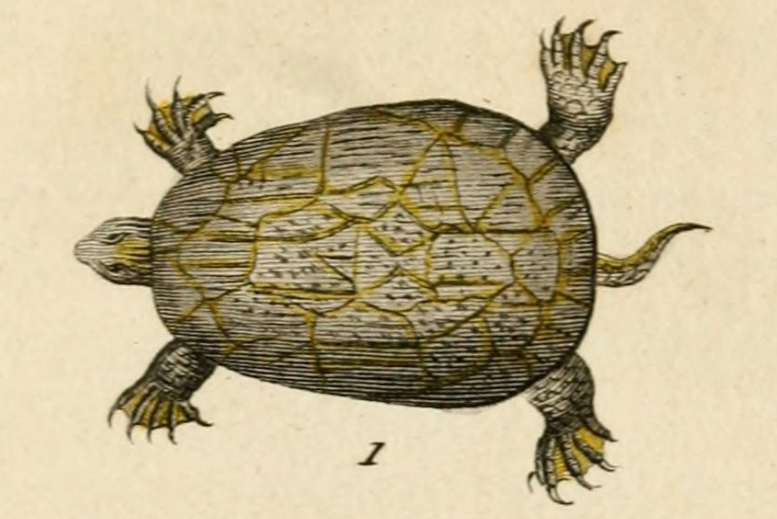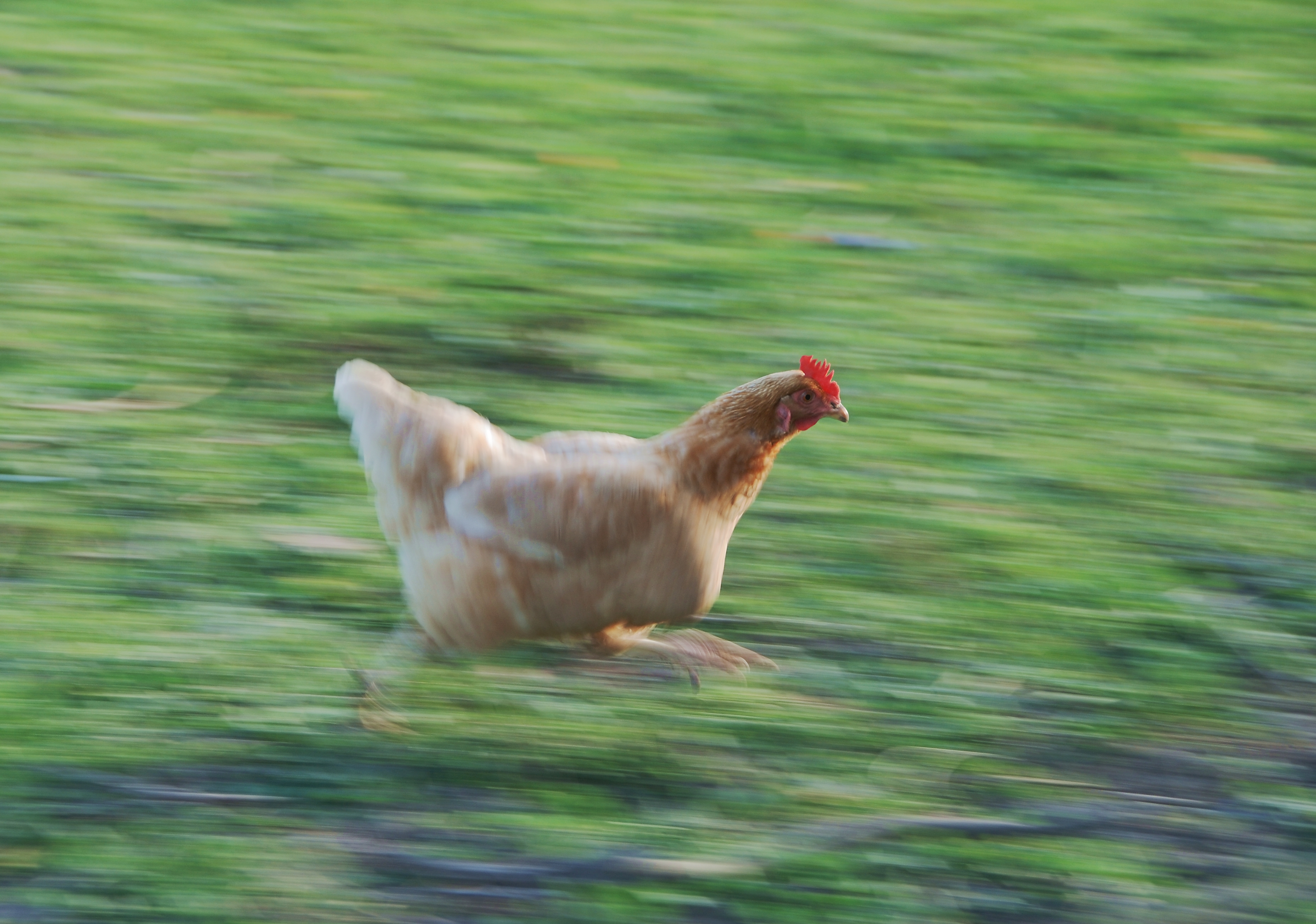|
Deirochelys Reticularia
The chicken turtle (''Deirochelys reticularia'') is a turtle native to the southeastern United States. It is the only extant member of the genus '' Deirochelys'' and is a member of the freshwater marsh turtle family Emydidae. The chicken turtle's scientific name refers to its extremely long neck and distinctive net-like pattern on its upper shell. There are three regionally distinct subspecies (eastern, western and Florida), which are thought to have evolved when populations became separated during periods of glaciation. These subspecies can be distinguished by their appearance; the western chicken turtle displays dark markings along the seams of its plastron (lower shell), while the plastron of the Florida subspecies is a bright yellow or orange color. Fossil records show that the chicken turtle has been present in the region for up to five million years. Chicken turtles inhabit shallow, still or slow-moving bodies of water with plenty of vegetation and a muddy substrate. The ... [...More Info...] [...Related Items...] OR: [Wikipedia] [Google] [Baidu] |
Pliocene
The Pliocene ( ; also Pleiocene) is the epoch in the geologic time scale that extends from 5.333 million to 2.58See the 2014 version of the ICS geologic time scale million years ago. It is the second and most recent epoch of the Neogene Period in the Cenozoic Era. The Pliocene follows the Epoch and is followed by the Epoch. Prior to the 2009 revision of the geologic time sca ... [...More Info...] [...Related Items...] OR: [Wikipedia] [Google] [Baidu] |
Deirochelys
''Deirochelys'' is a genus of freshwater turtle in the family Emydidae, the pond and marsh turtles. It contains one extant species, the chicken turtle (''Deirochelys reticularia''), which is native to the southeastern United States. A second extinct member, '' Deirochelys carri'', is known from a fossil found in Alachua County, Florida. The genus was first described by Louis Agassiz in 1857, and its name is derived from the Ancient Greek words for "neck" (''deirḗ'') and "tortoise" (''khélūs''), referring to the particularly long necks of these turtles. Evolution Like other emydids (members of the family Emydidae), ''Deirochelys'' karyotype consists of 2N=50 chromosomes. A 1996 study of various turtles' mitochondrial DNA supported the partition of Emydidae into two subfamilies, Emydinae and Deirochelyinae, with ''Deirochelys'' placed within the latter. ''Deirochelys'' was reported to be the sister genus to the rest of the subfamily, meaning it shares a common ancestor with t ... [...More Info...] [...Related Items...] OR: [Wikipedia] [Google] [Baidu] |
Louis Augustin Guillaume Bosc
Louis Augustin Guillaume Bosc (or Louis-Augustin Bosc d'Antic) (29 January 1759 – 10 July 1828) was a French botanist, invertebrate zoologist, and entomologist. Biography Bosc was born in Paris, the son of Paul Bosc d’Antic, a medical doctor and chemist. He studied at Dijon, where he was the pupil of botanist Jean-François Durande and chemist Louis-Bernard Guyton-Morveau. Being unable to become an artilleryman, he worked initially for the office of the Controller-General of Finances, controller general and then for the comptroller of the postal service. In time he took courses in botany under Antoine-Laurent de Jussieu and met botanist René Louiche Desfontaines, René Desfontaines and naturalist Pierre Marie Auguste Broussonet. He also took up with Jean-Marie Roland, vicomte de la Platière, Jean Marie Roland and Madame Roland and formed a lasting relationship with Danish entomologist Johan Christian Fabricius. While working for the postal service he carried out work on natu ... [...More Info...] [...Related Items...] OR: [Wikipedia] [Google] [Baidu] |
Chicken Turtle From Sonnini & Latreille 1801
The chicken (''Gallus gallus domesticus'') is a domestication, domesticated junglefowl species, with attributes of wild species such as the grey junglefowl, grey and the Ceylon junglefowl that are originally from Southeastern Asia. Rooster or cock is a term for an adult male bird, and a younger male may be called a cockerel. A male that has been castrated is a capon. An adult female bird is called a hen and a sexually immature female is called a pullet. Humans now keep chickens primarily as a source of food (consuming both their Chicken as food, meat and egg as food, eggs) and as pets. Traditionally they were also bred for cockfighting, which is still practiced in some places. Chickens are one of the most common and widespread domestic animals, with a total population of 23.7 billion , up from more than 19 billion in 2011. There are more chickens in the world than any other bird. There are numerous cultural references to chickens – in myth, folklore and religion, and in la ... [...More Info...] [...Related Items...] OR: [Wikipedia] [Google] [Baidu] |
Turtle Soup
Turtle soup, also known as Terrapin soup, is a soup or stew made from the meat of turtles. Differing versions of the soup exist in some cultures and are viewed as a delicacy. Versions China In China, and in several countries in Southeast Asia such as Singapore, turtle soup is a delicacy. The meat, skin and innards of the turtle are used in the soup. Soft-shelled turtles such as '' Pelodiscus sinensis'' are commonly consumed in this manner in Chinese cuisine, while consumption of hard-shelled turtles is often avoided due to their mythical connotations. However, the hard shells of certain turtles are used in the preparation of a dish called '' Guilinggao'' or "turtle jelly". See in particular APPENDIX 1: "Golden Coin Turtle" (A report dated April 27, 2002 by ECES News (Earth Crash Earth Spirit)), and APPENDIX 3: "Tortoise Jelly (Turtle Jelly)". Quote: "The popularity of turtle jelly can be seen in the success of Ng Yiu-ming. His chain of specialty stores has grown from one s ... [...More Info...] [...Related Items...] OR: [Wikipedia] [Google] [Baidu] |
Tastes Like Chicken
"Tastes like chicken" is a declaration used when trying to describe the flavor of an unusual food. The expression has been used so often in popular culture that it has become a cliché. As a result, the phrase is also sometimes used to provide incongruous humor, by being used to describe foods or situations where it has no real relevance. Possible explanations As an explanation of why unusual meats would taste more like chicken than common alternatives such as beef or pork, different possibilities have been offered. One idea is that chicken is seen as having a bland taste compared to other meats because fat contributes more flavor than muscle (especially in the case of a lean cut such as a skinless chicken breast), making it a generic choice for comparison. Modern poultry, particularly mass-produced chicken and turkey, is particularly bland in taste, as animals are bred for large muscle mass that grows faster than naturally breeding fowl; trace chemicals in the meat that would gi ... [...More Info...] [...Related Items...] OR: [Wikipedia] [Google] [Baidu] |
Common Name
In biology, a common name of a taxon or organism (also known as a vernacular name, English name, colloquial name, country name, popular name, or farmer's name) is a name that is based on the normal language of everyday life; and is often contrasted with the scientific name for the same organism, which is Latinized. A common name is sometimes frequently used, but that is not always the case. In chemistry, IUPAC defines a common name as one that, although it unambiguously defines a chemical, does not follow the current systematic naming convention, such as acetone, systematically 2-propanone, while a vernacular name describes one used in a lab, trade or industry that does not unambiguously describe a single chemical, such as copper sulfate, which may refer to either copper(I) sulfate or copper(II) sulfate. Sometimes common names are created by authorities on one particular subject, in an attempt to make it possible for members of the general public (including such interested part ... [...More Info...] [...Related Items...] OR: [Wikipedia] [Google] [Baidu] |
Hibernation
Hibernation is a state of minimal activity and metabolic depression undergone by some animal species. Hibernation is a seasonal heterothermy characterized by low body-temperature, slow breathing and heart-rate, and low metabolic rate. It most commonly occurs during winter months. Although traditionally reserved for "deep" hibernators such as rodents, the term has been redefined to include animals such as bears and is now applied based on active metabolic suppression rather than any absolute decline in body temperature. Many experts believe that the processes of daily torpor and hibernation form a continuum and utilise similar mechanisms. The equivalent during the summer months is aestivation. Hibernation functions to conserve energy when sufficient food is not available. To achieve this energy saving, an endothermic animal decreases its metabolic rate and thereby its body temperature. Hibernation may last days, weeks, or months—depending on the species, ambient temperatu ... [...More Info...] [...Related Items...] OR: [Wikipedia] [Google] [Baidu] |
Terrestrial Ecosystem
Terrestrial ecosystems are ecosystems which are found on land. Examples include tundra, taiga, temperate deciduous forest, tropical rain forest, grassland, deserts. Terrestrial ecosystems differ from aquatic ecosystems by the predominant presence of soil rather than water at the surface and by the extension of plants above this soil/water surface in terrestrial ecosystems. There is a wide range of water availability among terrestrial ecosystems (including water scarcity in some cases), whereas water is seldom a limiting factor to organisms in aquatic ecosystems. Because water buffers temperature fluctuations, terrestrial ecosystems usually experience greater diurnal and seasonal temperature fluctuations than do aquatic ecosystems in similar climates. Terrestrial ecosystems are of particular importance especially in meeting Sustainable Development Goal 15 that targets the conservation-restoration and sustainable use of terrestrial ecosystems. Organisms and processes Or ... [...More Info...] [...Related Items...] OR: [Wikipedia] [Google] [Baidu] |
Substrate (marine Biology)
Stream substrate (sediment) is the material that rests at the bottom of a stream. There are several classification guides. One is: * Mud – silt and clay. *Sand – Particles between 0.06 and 2 mm in diameter. * Granule – Between 2 and 4 mm in diameter. *Pebble – Between 4 – 64 mm in diameter. * Cobble – between 6.4 and 25.6 cm in diameter *Boulder – more than 25.6 cm in diameter. Stream substrate can affect the life found within the stream habitat. Muddy streams generally have more sediment in the water, reducing clarity. Clarity is one guide to stream health. Marine substrate can be classified geologically as well. See Green et al., 1999 for a reference. Mollusks and clams that live in areas with substrate, and need them to survive, use their silky byssal threads to cling to it. See Cteniodes Ales for reference. See also * Grain size * Substrate (biology) In biology, a substrate is the surface on which an organism (such as a plant, fungu ... [...More Info...] [...Related Items...] OR: [Wikipedia] [Google] [Baidu] |
Glaciation
A glacial period (alternatively glacial or glaciation) is an interval of time (thousands of years) within an ice age that is marked by colder temperatures and glacier advances. Interglacials, on the other hand, are periods of warmer climate between glacial periods. The Last Glacial Period ended about 15,000 years ago. The Holocene is the current interglacial. A time with no glaciers on Earth is considered a greenhouse climate state. Quaternary Period Within the Quaternary, which started about 2.6 million years before present, there have been a number of glacials and interglacials. At least eight glacial cycles have occurred in the last 740,000 years alone. Penultimate Glacial Period The Penultimate Glacial Period (PGP) is the glacial period that occurred before the Last Glacial Period. It began about 194,000 years ago and ended 135,000 years ago, with the beginning of the Eemian interglacial. Last Glacial Period The last glacial period was the most recent glacial pe ... [...More Info...] [...Related Items...] OR: [Wikipedia] [Google] [Baidu] |


_Maja_squinado.jpg)


